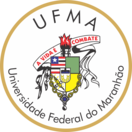| Compartilhamento |


|
Use este identificador para citar ou linkar para este item:
https://tedebc.ufma.br/jspui/handle/tede/6085| Tipo do documento: | Dissertação |
| Título: | IDENTIDADE TERRITORIAL DE JOVENS NEGROS NO QUILOMBO URBANO LIBERDADE- SÃO LUÍS-MA |
| Título(s) alternativo(s): | TERRITORIAL IDENTITY OF YOUNG BLACK PEOPLE IN URBAN QUILOMBO LIBERDADE - SAO LUIS-MA |
| Autor: | SOUZA , Samara do Nascimento  |
| Primeiro orientador: | PETRUS, Júlia Kátia Borgneth |
| Primeiro coorientador: | RODRIGUES, Sávio José Dias |
| Primeiro membro da banca: | PETRUS, Júlia Kátia Borgneth |
| Segundo membro da banca: | RODRIGUES, Sávio Jose Dias |
| Terceiro membro da banca: | LIMA, Roberta Maria Batista de Figueiredo |
| Quarto membro da banca: | RATTS, Alecsandro José Prudêncio |
| Quinto membro da banca: | MARINHO, Samarone Carvalho |
| Resumo: | A juventude é uma categoria social situada em processos dinâmicos, marcados pelo tempo histórico e no espaço geográfico, trazendo no campo da Geografia a diferenciação espacial e a produção de territórios como importantes. No seio deste debate atentamos para a diferenciação espacial, uma vez que a representação conceitual dada como universal ganha distinções a partir das singularidades formadas em diferentes escalas, seja no campo ou na cidade, assim como nos aspectos culturais, religiosos e econômicos, sendo necessário falar de juventudes nos seus distintos espaços e contextos (ABROMO, 2005). A presente pesquisa se propôs em analisar os elementos de construção da identidade territorial dos (as) jovens negros (as) moradores do Quilombo Urbano Liberdade em São Luís-MA, tendo como recorte espacial os bairros Liberdade, Camboa e Fé em Deus. A metodologia do trabalho está centrada em entrevistas semi-estruturadas, observação participante e Cartografia Social, o conjunto destas ações auxiliou no desenvolvimento dos objetivos da pesquisa. Ao analisarmos a realidade espacial vivenciada pelos jovens, observamos os atravessamentos dos racismos na construção da identidade negra, a qual leia-se enquanto um elemento central na construção da identidade territorial dessessujeitos, tendo em vista, que a negritude passa pela categoria histórica no negro no universo racista e não apenas biológica (MUNANGA, 2012). Identificamos ainda os agenciamentos construtores da identidade dos sujeitos juvenis, lidando cotidianamente com os tensionamentos entre a zona do ser e a zona do não ser. De um lado, temos racismo estrutural (lido como imposição da zona do não ser) presente no território e fora dele, agindo como catalisador de estereótipos negativos e preconceitos sutilmente moldando a forma como esses jovens são percebidos e, por consequência, como eles se percebem. No entanto, por outro lado, é na construção da subjetividade de identidade da juventude negra e quilombola que as pautas de luta e resistência se tornam aspectos centrais, um dos elementos fundantes desta compreensão é a releitura dos significados e sentidos do ser negro e quilombola a partir da inserção de jovens nos grupos culturais, prá ticas tradicionais e contemporâneas no território. Os quais, assimilam ao quilombo Liberdade a partir das resistências, insurgências, sendo fundamental na construção de uma identidade étnico-racial (negro- quilombola) positivada, trabalhando autonomia, autoestima e valorizando os elementos culturais e visuais da comunidade negra, o resgate e histórico dessa perspectiva da resistência nos faz reconhecer no quilombo urbano Liberdade a recriação do ser “zona do ser” para as juventudes. |
| Abstract: | Youth is a social category situated in dynamic processes, marked by historical time and geographic space, bringing spatial differentiation and the production of territories as important in the field of Geography. In this debate, we pay attention to spatial differentiation, since the conceptual representation considered universal gains distinctions from the singularities formed at different scales, whether in the countryside or in the city, as well as in cultural, religious and economic aspects, making it necessary to talk about youth in its different spaces and contexts (ABROMO, 2005). This research proposed to analyze the elements of construction of the territorial identity of young black residents of the Quilombo Urbano Liberdade in São LuísMA, having as spatial cut the neighborhoods of Liberdade, Camboa and Fé em Deus. The methodology of the work is centered on semi-structured interviews, participant observation and Social Cartography, the set of these actions helped in the development of the research objectives. When analyzing the spatial reality experienced by young people, we observed the intersections of racism in the construction of black identity, which is read as a central element in the construction of the territorial identity of these subjects, considering that blackness involves the historical category of black people in the racist universe and not just biological (MUNANGA, 2012). We also identified the agencies that construct the identity of young subjects, dealing daily with the tensions between the zone of being and the zone of not being. On the one hand, we have structural racism (read as the imposition of the zone of not being) present in the territory and outside it, acting as a catalyst for negative stereotypes and prejudices, subtly shaping the way these young people are perceived and, consequently, how they perceive themselves. However, on the other hand, it is in the construction of the identity subjectivity of black and quilombola youth that the agendas of struggle and resistance become central aspects. One of the founding elements of this understanding is the reinterpretation of the meanings and senses of being black and quilombola based on the insertion of young people in cultural groups, traditional and contemporary practices in the territory. These assimilate the quilombo Liberdade based on resistance and insurgencies, being fundamental in the construction of a positive ethnicracial identity (black-quilombola), working on autonomy, self-esteem and valuing the cultural and visual elements of the black community. The recovery and history of this perspective of resistance makes us recognize in the urban quilombo Liberdade the recreation of the “zone of being” for young people. |
| Palavras-chave: | Juventude; quilombo urbano; cidade; território negro; São Luís Youth: urban quilombo; city; black territory; São Luís |
| Área(s) do CNPq: | Antropologia das Populações Afro-Brasileiras |
| Idioma: | por |
| País: | Brasil |
| Instituição: | Universidade Federal do Maranhão |
| Sigla da instituição: | UFMA |
| Departamento: | DEPARTAMENTO DE GEOCIENCIAS/CCH |
| Programa: | PROGRAMA DE PÓS-GRADUAÇÃO EM GEOGRAFIA (PPGGEO) |
| Citação: | SOUZA , Samara do Nascimento. Identidade territorial de jovens negros no quilombo urbano Liberdade- São Luís-Ma. 2025. 132 f. Dissertação( Programa de Pós-graduação em Geografia (PPGGEO)) - Universidade Federal do Maranhão, São Luís, 2025. |
| Tipo de acesso: | Acesso Aberto |
| URI: | https://tedebc.ufma.br/jspui/handle/tede/6085 |
| Data de defesa: | 3-Jan-2025 |
| Aparece nas coleções: | DISSERTAÇÃO DE MESTRADO - PROGRAMA DE PÓS-GRADUAÇÃO EM GEOGRAFIA |
Arquivos associados a este item:
| Arquivo | Descrição | Tamanho | Formato | |
|---|---|---|---|---|
| SAMARA DO NASCIMENTO SOUZA.pdf | Dissertação de Mestrado | 2,84 MB | Adobe PDF | Baixar/Abrir Pré-Visualizar |
Os itens no repositório estão protegidos por copyright, com todos os direitos reservados, salvo quando é indicado o contrário.




